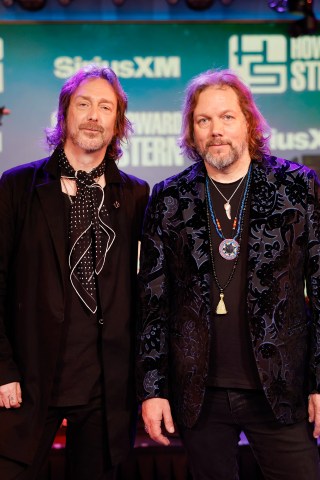Bryan Cranston’s Next Leading Role: Just Who Was Dalton Trumbo?
There's a reason you didn't read about this guy in your history books
November 2, 2015
Bryan Cranston has played characters ranging from a suburban dad to an American president, Siberian tiger, and of course a cancer-stricken teacher turned meth kingpin (in perhaps his most notorious role) – but as is so common with successes, people are asking: So what’s next?
What’s next, as it turns out, is a lead role in Jay Roach’s biographical drama centered on a historical figure who is a match for Cranston’s gusto and gravity – Dalton Trumbo.
If that name doesn’t really ring any bells in your memory, there’s a reason for that. For a significant part of his career, members of the United States Congress and influential persons within in the entertainment industry were determined to make sure his name was stricken from the collective American consciousness and that he never worked in Hollywood again.
Read on below for some things your history books may have glossed over.
His Beginnings in Hollywood
Born to Colorado parents in 1905, Trumbo got his start at the University of Colorado at Boulder contributing as both a news reporter and humor columnist for a year. After that year, his father died, leaving Dalton to support his mother and sister. He went to work wrapping bread at a bakery while writing scores of short stories and novels in his off-hours.
Later he attended USC for two years before moving on to write for magazines in the ’30s like Vanity Fair and the Hollywood Spectator, the latter of which he went on to serve as managing editor for.
Trumbo’s break into Hollywood came when the Hollywood Spectator shut down temporarily. Knowing he needed a job, one of his contributors who also worked in Warner Bros. story department reportedly put in a good word and he was hired as a reader.
In 1935, his first published novel, “Eclipse,” came out and by 1937, he was among the most successful writers in Hollywood – even garnering an Academy Award nomination for his work on 1940’s “Kitty Foyle,” which starred Ginger Rogers.
The Communism Factor
In his own words, “the country—and indeed, the whole world—was in the throes of a social, economic and political crisis in which, for me, at least, it was impossible not to take sides.”
Gaining popularity in America initially as a response to the Nazi fascism rising in Europe, before the 1940s, Communism was more or less an accepted movement.
“That in most of the great struggles of the period … the Communists were among the most effective forces in these struggles—note the word among—and incontestably the hardest working and best organized,” Trumbo mused, according to Christopher Trumbo and Larry Ceplair’s book “Dalton Trumbo: Blacklisted Hollywood Radical.”
He continued: “All in all, feeling as I did, it’s rather significant that I waited until the winter of 1943-44 to join a party with which I had been in almost complete sympathy since 1935 or 1936.”
The Rise of the Hollywood Blacklist
Despite the early tolerance of Communism in America, the tides inevitably turned in the late ’40s for the worse as public and political opinions concerning the Soviet Union soured. And this wouldn’t change in the next two decades as McCarthyism took hold of the nation in the midst of the Second Red Scare.
In response, William R. Wilkerson, founder of the Hollywood Reporter, published a column entitled “A Vote For Joseph Stalin” accusing those he thought to be Communist sympathizers in the entertainment industry by name – one of whom was Dalton Trumbo.
The House Committee on Un-American Activities meanwhile launched investigations into these individuals in order to gauge the “communist infiltration of the business.” Subsequently, leaders of the Motion Pictures Association of America issued a ban on anyone who refused to cooperate with the investigation. Trumbo became one of “Hollywood 10” — people from across the film industry who were infamously banned from working by the MPAA decree.
For his disobedience, Trumbo was also given 11 months in prison for “contempt of Congress.”
But That Didn’t Stop Him …
Fighting the injustices that today would seem ludicrous, Trumbo refused to succumb to the blacklist, instead opting to pioneer a black market of sorts working under pseudonyms for many years.
It wasn’t until 1960, when Trumbo was publicly credited by Otto Preminger and Kirk Douglass for his screenwriting on “Exodus” and “Spartacus” respectively — both of which were hugely successful at the box office — that the Hollywood pariah got his due praise. And after President John F. Kennedy went to see the latter film in theaters (thus proving Trumbo was not the enemy after all), blacklisting more or less fell out of favor.
Selected Credits
Learn the history behind 11 of his most iconic works over at Bleecker Street Films:
Five Came Back (1939)Kitty Foyle (1940)A Guy Named Joe (1943)Thirty Seconds Over Tokyo (1944)Gun Crazy (1950)Roman Holiday (1953)The Brave One (1956)Spartacus (1960)Exodus (1960)Johnny Got His Gun (1971)Papillon (1973)























